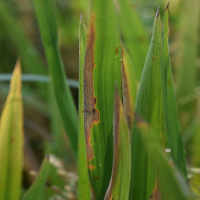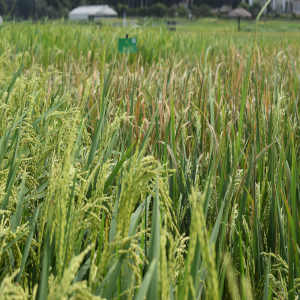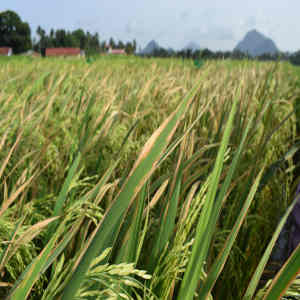
- Address : Bathalagoda, Ibbagamuwa, Sri Lanka
- E- Mail : rrdi@doa.gov.lk
- Telephone : +94 372 258561
- Fax : +94 372 259881
Rice In Sri Lanka - Rice Diseases
Bacterial Leaf Blight
Causative agent
Bacteria, Xanthomonas oryzae pv. oryzae.
Plant parts and life stages affected
Seedling stage of the plant and maturity stage could infect by this pathogen.
Plant parts that are infected could be leaves.
Symptoms
On seedling stage wilting and yellowing of leaves, or wilting of seedlings (called kresek). Kresek on seedlings may sometimes be confused with early rice stem borer damage. To distinguish kresek symptoms from stem borer damage, Kresek should show yellowish bacterial ooze coming out of the cut ends when leaves squeezed. Unlike plants infested with stem borer, rice plants with kresek are not easily pulled out from soil.
On mature plants, lesions usually develop as water-soaked orange stripes on leaf blades or leaf tips. Lesions have a wavy margin and progress toward the leaf base.





Conditions that favour the disease
- It can occur in both in irrigated and rainfed lowland areas.
- Favors temperatures at 25−34°C
- It is commonly observed when strong winds and continuous heavy rains occur
- High humidity
- Excessive application of nitrogen fertilizer
Disease Management
Within the crop season
- Application of urea in recommended dosages or application of urea based on leaf colour chart.
- Ensure good drainage of fields.
Immediately after the disease is observed,- stop water supply, and let the field dry.
- When total removal of water is, not possible, try to out-flow water through drainage ditches or water courses (wakkada).
- Water drained from the fields infected with disease should not be diverted through disease free fields as much as possible.
- Once the disease is observed, application of potassium fertilizer could manage further spread of the disease.
